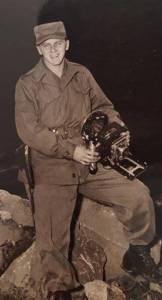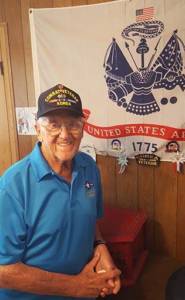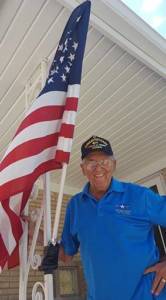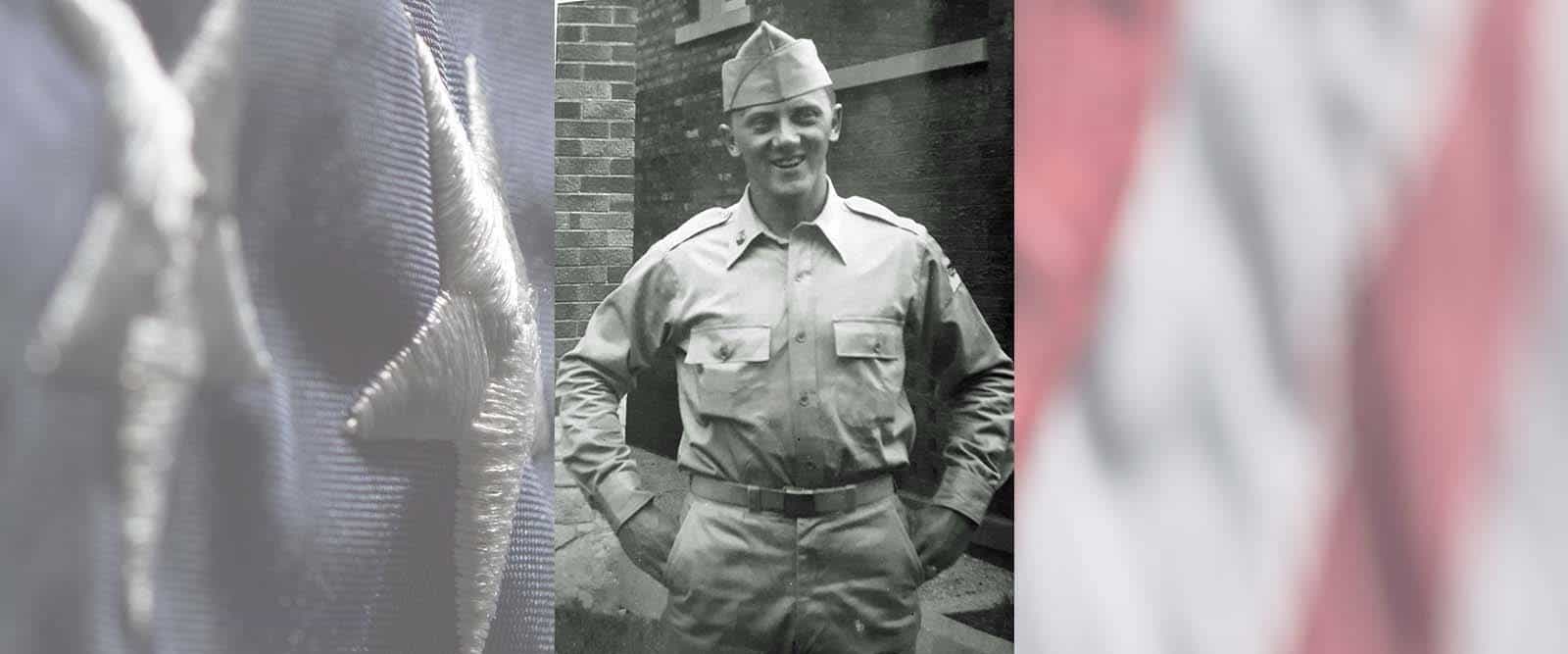U.S. Army Korean War Chicago, IL Flight date: 07/12/17
By David Koziol, Honor Flight Chicago Veteran Interview Volunteer
Twenty-two-year-old Chicago resident Roy Stanek was drafted into the U.S. Army in March 1951 for a period of two years. Just a few months earlier he met and began dating a girl named Wanda. Before he left for basic training he asked Wanda to marry him and she accepted. The story goes that Roy did not want Wanda “dating” anyone else while he was away. The two-year gap and Roy’s “combat adventures” would not hinder Roy from eventually marrying Wanda when he returned from Korea. They would remain living in Chicago and raise their five children, Lynn, Lori, Lucy, Allen, and Gary.
Roy grew up in the Chicago neighborhood of Gage Park and graduated from Gage Park High School. Roy, along with his twin brother Ray worked as lifeguards. Roy worked at the Gage Park pool and Ray at Sherman Park. They were drafted around the same time; however, Ray was recovering from a recent surgery and was not inducted into the armed services.
Roy was now separated from his brother Ray for the first time and was sent to Ft. Leonard Wood, Missouri for basic training. He trained for eight weeks as an engineer with the 6th Armored Division. After basic training, he was immediately sent to Seattle, Washington and then was shipped to Japan for eventual deployment to Korea. While in Japan, he was told there were too many engineers and was asked if he could read maps. Roy immediately replied “yes” because as he says, “It was fresh in my mind.” Roy by chance had map reading and signal training during his last week of basic. Roy says, “This paid off for the rest of my life.” Roy “lucked out” and was transferred to the 4th Signal Corps.



Roy began training as a telephone lineman while still in Japan. He climbed the poles and ran the wire used for telephone communication. This training would prove quite valuable to Roy after his Army discharge. After a very short time in Japan learning his new skill, he was transferred to Korea in August 1951. Roy mastered a new skill while on assignment near the 38th Parallel as a photographer. He would earn a Bronze Star while serving in this capacity.Roy would place an aerial camera on a tripod which sat on top of a forward O.P. (observation post) bunker. This would allow him to take pictures of the enemy held territory to his front. These O.P.’s were along the M.L.R., (main line of resistance) and these actions would draw enemy mortar and small arms fire. After taking the pictures, he would get back inside the bunker, and the negatives would be quickly sent to Japan for development. The developed photographs were sent back to the O.P.’s and to field artillery units. Roy created a grid system which he applied to the photographs, so the O.P.’s using the grid could now direct the field artillery’s fire. This technique increased the field artillery’s accuracy, and PFC Roy Stanek was awarded the Bronze Star. However, these assignments would not be Roy’s only dangerous missions.
While still stationed in Korea, Roy learned he was to put his aerial camera to its original use. Aircraft pilot Capt. Casper of Atlanta, Georgia needed a new aerial photographer because of a recent transfer. Roy, who had never been inside an airplane before, received the assignment. Roy flew eighteen missions over a six-month period with Capt. Casper in his two-seat Cessna L-19 aircraft. They flew at less than 3000 feet and took enemy fire on every mission but they were never hit. Roy says, “I had a whole lot of luck.” While airborne Roy photographed mountain roads in the early morning after the roads and mountainsides were bombed. They were usually just bombed the previous evening with the intent to cause road closures for the enemy. He had to use “haze filters” on the aerial camera to penetrate the morning mist. The photographs would be sent to Japan and assessed to see if the damage to the roads was successful. If a failure, the roads and mountainsides would have to be targeted again.
Roy would also pull some “safer” duties as a photographer. He would be assigned to take pictures when dignitaries and celebrities would visit. He took many of these pictures south of the M.L.R. near the town of Kwandae-ri, South Korea. Roy used a 4”x5” speed graphic camera when doing this kind of work. He took pictures of many U.S. Generals when they visited various units. He also took pictures of many celebrities including Betty Hutton, Danny Kaye, Piper Laurie, and Danny Thomas. Roy developed these types of photographs himself and has filled and maintained many photo albums of his time in Korea. He still has them in his possession and they are very interesting to say the least.
Roy was discharged three months early because of a points system. He says, “I earned more points being under enemy fire.” He only had to serve twenty-one months and returned home in January, 1953. He soon took a job with Illinois Bell as a telephone lineman – the training and experience in Korea had paid off. He worked nine years as a lineman before becoming, of course, a photographer! He worked in photography with Illinois Bell for twenty-three more years before retiring.
After being hired as a linesman, Roy joined the American Legion that was sponsored by Illinois Bell. He proudly received a 50 Year Anniversary certificate and is currently a member of American Legion Post #600. Roy resides with his wife Wanda, of sixty-three years, in Chicago’s Clearing neighborhood. He meets with fellow serviceman at the Legion hall every Tuesday.
Roy, we thank you for your exceptional military service during the Korean War. Enjoy your much-deserved Honor Flight to Washington, D.C.



